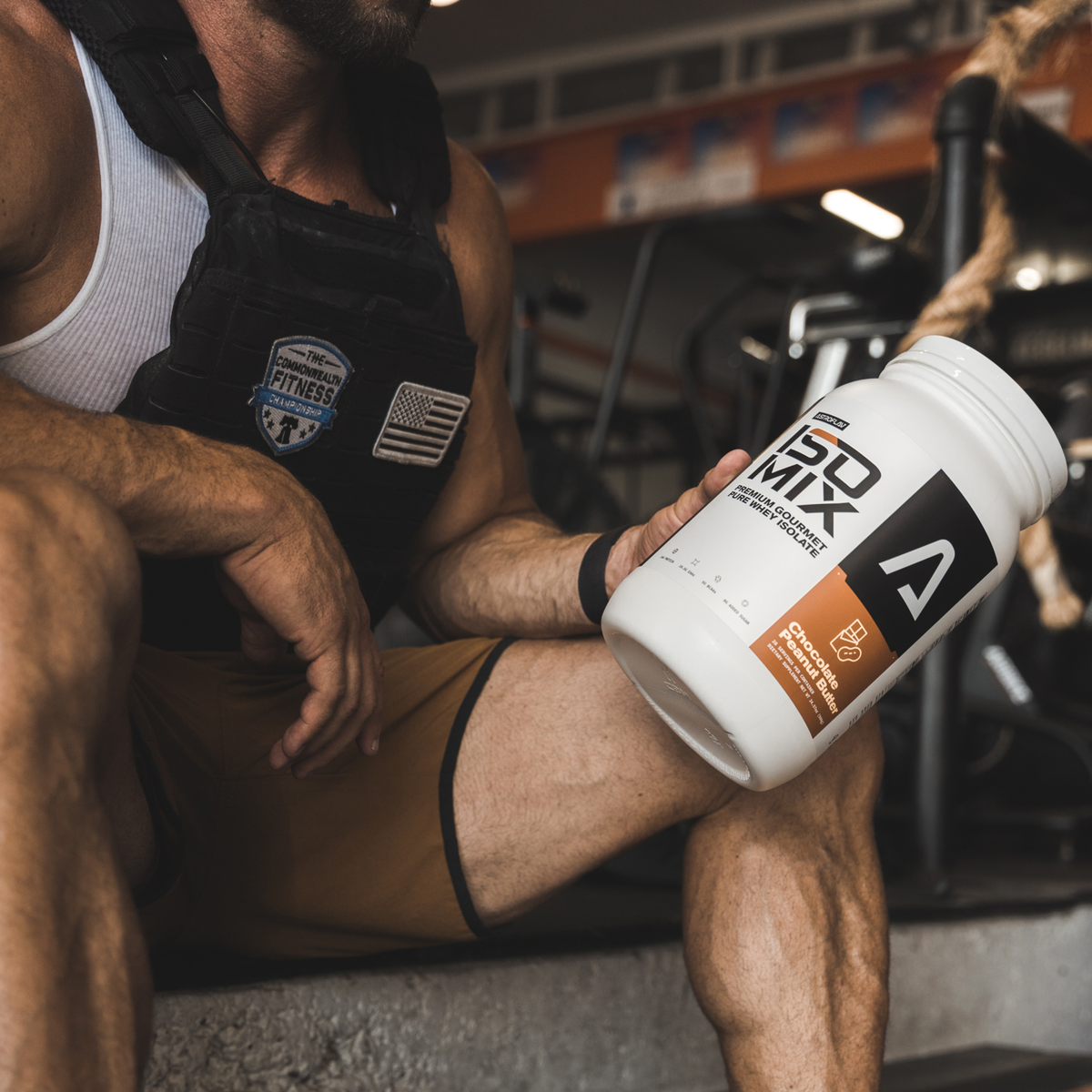
Fat Loss & Glucose Disposal Agent (GDA)
In the world of fitness, understanding the connection between fat loss and Glucose Disposal Agents (GDAs) is key. GDAs help regulate how your body uses glucose and can play a big role in shedding fat. In this blog, we'll break down what Glucose Disposal Agents are and how they can support your weight loss journey. Whether you're new to the topic or looking to learn more, join us as we explore the link between GDAs and losing weight effectively.
What is a GDA Supplement?
A glucose disposal agent (GDA) is a non-hormonal supplement that mimics how insulin would work. They make the body more efficient at disposing of glucose in the bloodstream. Essentially, their primary function is to decrease the amount of insulin secreted by the body when consuming carbohydrate-filled meals.
A high-quality GDA supplement will allow you to eat more carbs to help promote lean muscle gain; therefore, enhancing athletic performance and limiting the amount of carbs to be stored as body fat. GDA supplements make it possible for limiting fat gain and ensuring carbs are being used efficiently throughout the body.
Prior to training, a glucose disposal agent supplement will enhance the uptake of these carbs into glycogen within the muscle and then be used as fuel. Additionally, GDA's contribute to muscle health by supporting glycogen storage for fullness and improving blood vessel health for vascularity.
Breakdown of Carbohydrates Explained
In order to better understand how a glucose disposal agent (GDA) does it's job, it's important to first get an understanding on how carbs work in the body. Most carbohydrates are composed of large chains of sugar molecules, known as monosaccharides. When several monosaccharides (simple sugars) are linked together, they form a polysaccharide, or complex carbohydrate.
In order for the body to utilize these carbohydrates as fuel, it must break down these longer chains into smaller ones before they can be absorbed into the bloodstream. Interestingly enough, the digestion of carbohydrates begins in the mouth where amylase (a salivary enzyme) breaks down starch (a complex sugar found in plant foods) into smaller molecules.
Following this phase, carbs then enter the stomach and pass through to the small intestine, where other enzymes convert these simple sugars into glucose and fructose. These are the two sugars that enter the bloodstream and are used by the body for energy.
Despite what most keto enthusiasts will say, carbohydrates are the body's primary energy and fuel source. Many people think that carbs are bad and can cause excessive weight gain. However, in most cases, this is not true. Think... Carbs = Fuel. While proteins and fats can certainly be used for energy, the body only turns to those as a fuel source after it's used up the carbohydrates in your body [1].
It's also important to to note that once glucose and fructose are introduced into the bloodstream, they undergo absorption by different tissues in the body. Fructose is easily absorbed, whereas glucose relies on the hormone insulin for assistance.
Insulins Role in Fat Loss
Insulin is a naturally occurring hormone produced in the pancreas. Its' primary role is to transport glucose in the blood to destination cells throughout the body. It also helps your body turn food into energy and helps manage blood sugar levels.
When glucose is transferred into the cells, this essentially enhances muscle cell growth. Aka- muscle GAINS. On the hand, insulin can also make fat cells grow.
Whether carbohydrates are stored as glycogen in the muscles, liver, or adipose tissue depends on the body's glycogen reserves. The body can store only about 500g of glycogen between the liver and muscles. Once this limit is reached, any extra carbohydrates are converted into fatty acids and stored as triglycerides in fat cells.
With that being said, the greater the amount of glucose we can transport into skeletal muscle, the fewer amounts are converted and stored as fat. This serves as the fundamental principle for achieving a lean and muscular physique that excels in both athleticism and aesthetics while minimizing fat accumulation.
Fat Loss & GDA Connection
So how will taking a GDA supplement promote fat loss? To recap, a GDA's primary function is to decrease the amount of insulin secreted by the body when consuming carbohydrate-rich meals. They act as insulin and shuttle glucose into muscle cells and therefore less insulin is needed to be released by the body.
"By decreasing the amount of insulin secreted by the body, it will in turn help optimize insulin receptors and aid in decreasing fat gains. The glucose disposal agent can then be responsible for shuttling glucose into muscle and stay away from fat cells. Thus leading to decreased fat gain and increased lean muscle gain" (CSN, 2020).
That said, GDA supplements support the transportation of glucose into the skeletal muscle; so the more glucose into the muscles, the less that are converted and stored as fat. With the support of a GDA, the body can more efficiently load glycogen and also enhance how efficiently it takes uses essential nutrients for additional muscle growth and repair.
A good quality GDA will allow you to consume more carbs while also being able to gain lean muscle mass. By taking a glucose disposal agent with your pre-workout meal, your body will utilize it to fuel training and greater muscle connection.
How to Choose the Right GDA:
When it comes to choosing the best GDA supplement, there are a few key factors to consider. First and foremost, it is important to have a clean and safe ingredient list. You will want to look for ingredients like berberine, tributyrin, sodium alpha-lipoic acid, and banaba leaf extract. All of which are known for their ability to improve insulin sensitivity and glucose metabolism.
Another factor in choosing the right GDA supplement is the dosage. Make sure that the chosen GDA provides an adequate amount of each ingredient rather than a less of each. You will see on some GDA supplements a list of extra ingredients with fewer amounts which reduces the effectiveness on how well it will work.
How to take a GDA supplement:
A glucose disposal agent should be taken before a carbohydrate containing meal. AstroFlav's GlucoDrive suggested use:
-
Take 1 serving(1 capsule) 20 mins before a meal containing 25gs-40gs carbohydrates.
-
Take 2 servings (2 capsules) 20 mins before a meal containing 41gs-80gs carbohydrates.

The Bottom Line:
So... How does a GDA supplement support fat loss? Understanding the synergy between fat loss and a glucose disposal agent is paramount. GDAs aid in regulating glucose utilization, thus playing a pivotal role in fat reduction. These supplements optimize insulin function, support nutrient up-take, and enhance carb utilization for muscle growth while limiting fat storage.
By facilitating glucose uptake into muscles and minimizing insulin secretion, GDAs promote lean muscle gain and decrease fat accumulation. Utilizing high-quality GDAs with clean ingredients and proper dosing can amplify their effectiveness, making them a valuable tool in achieving both athletic performance and aesthetic goals.
AstroFlav's GlucoDrive, our top-selling GDA supplement provides minimal, safe, and effective ingredients to support your fat loss goals. Our GDA works to guide glucose from the carbs you eat into the muscle cells and out of the blood stream, thus supporting muscle growth and fat loss. Carbs are no longer the enemy in your journey to a snatched waste with GlucoDrive!
RESOURCES
-
Tiger Fitness. (n.d.). Glucose Disposal Agents: The Future of Carbohydrates? Retrieved from https://www.tigerfitness.com/blogs/nutrition/glucose-disposal-carbs
-
Cardiff Sports Nutrition. (n.d.). What Are Glucose Disposal Agents? Retrieved from https://www.cardiffsportsnutrition.co.uk/blogs/articles/what-are-glucose-disposal-agents#:~:text=By%20decreasing%20the%20amount%20of,and%20increased%20lean%20muscle%20gain.



